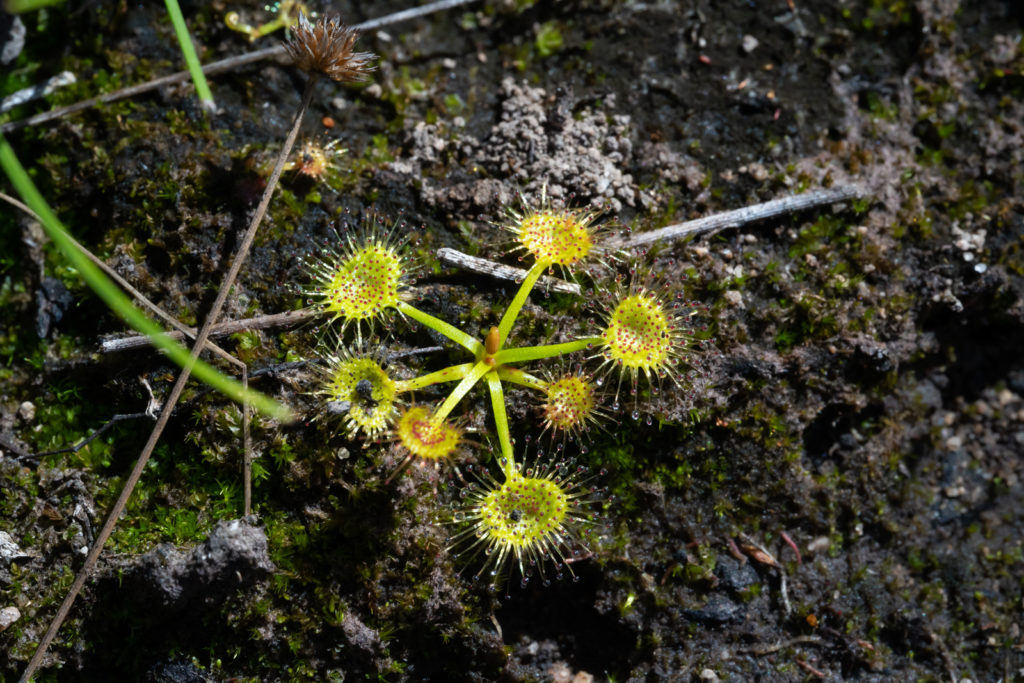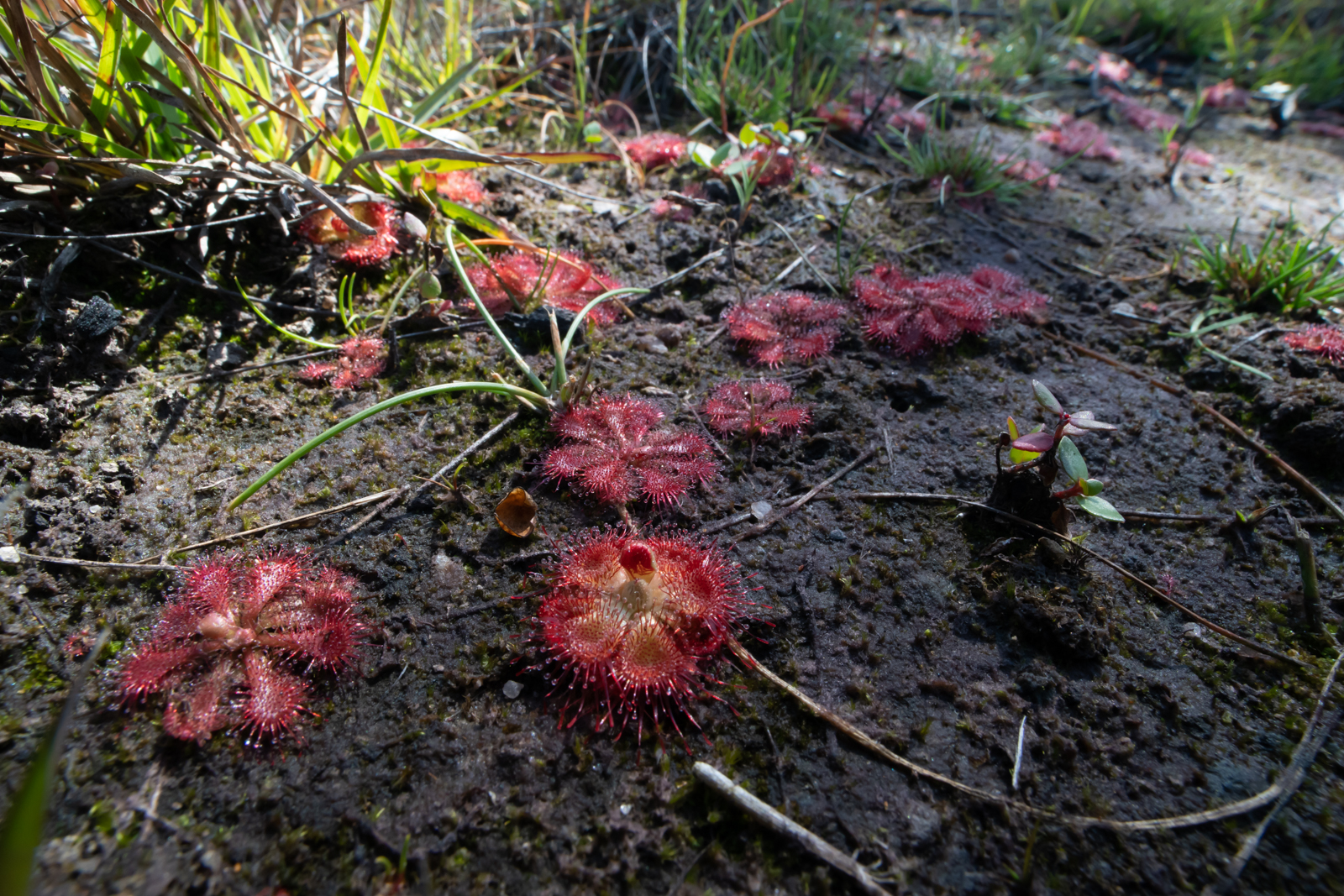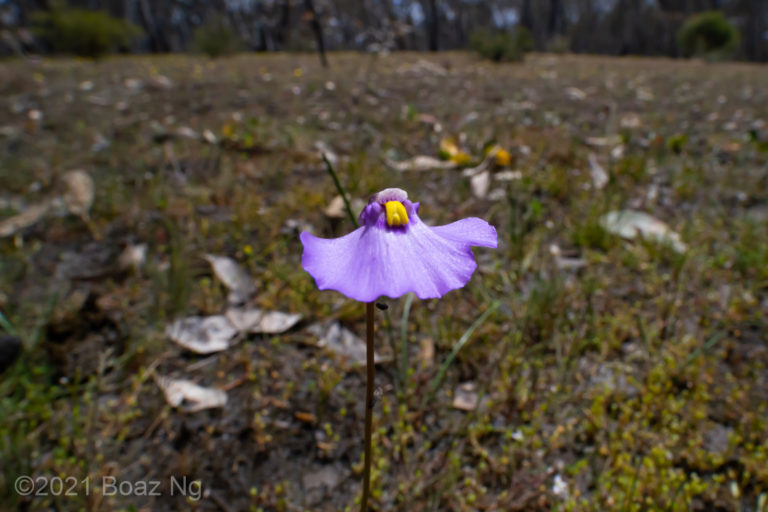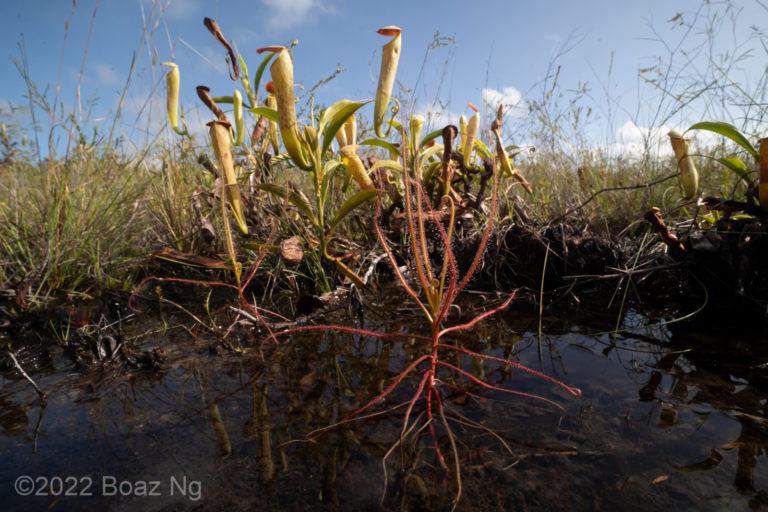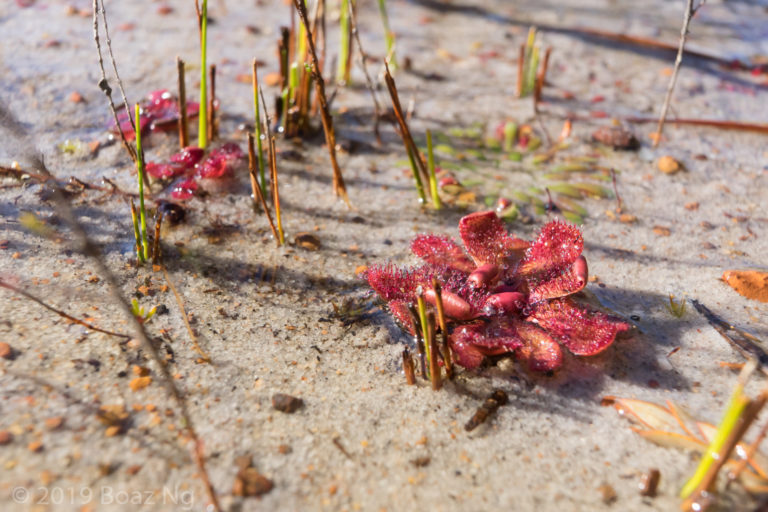The Torrington State Conservation Area is located in the Northern Tablelands of NSW. The area features undulating granite ranges that are host to several species of carnivorous plants. I visited the area in May after a wet summer and found seven carnivorous taxa.
Carnivorous plants in the area are concentrated around semi-permanent seepage fields located at the base of the ranges. These open fields of heathland appear to be formed by sheets of granite bedrock near the surface of the soil, forcing groundwater to seep out and inhibiting the growth of large trees.
Plants were also found in abundance in drains alongside roads and tracks. The slight dip in elevation formed by the drain formed seepages that were sufficiently persistent to support large populations of the plants.
Drosera burmannii was probably the most abundant species and grew wherever the ground was moist. There was a large variation in the size, shape and colour of the plants, with a rough correlation to sun exposure (brighter = redder) and moisture levels (large plants in wet areas, small circular plants in drying sand).
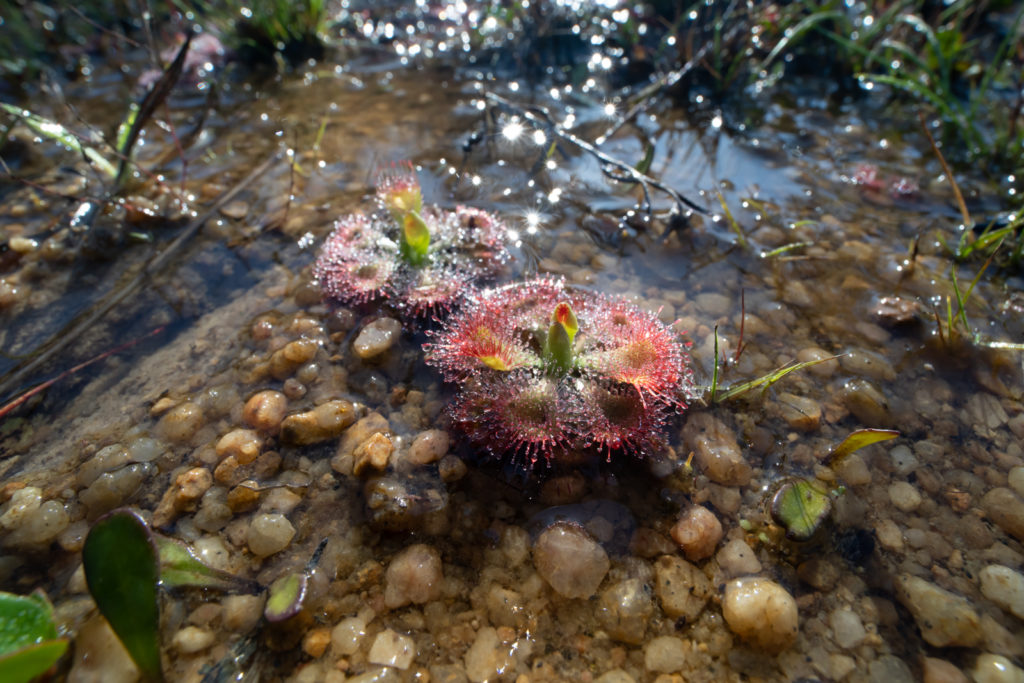
In moist, peatier niches, Drosera spatulata grew alongside Drosera burmannii. These plants were vivid red in coloration, which is typical of Australian plants during the colder months. The plants were medium in size with shorter petioles and rounder laminae, which is standard for the species in NSW.
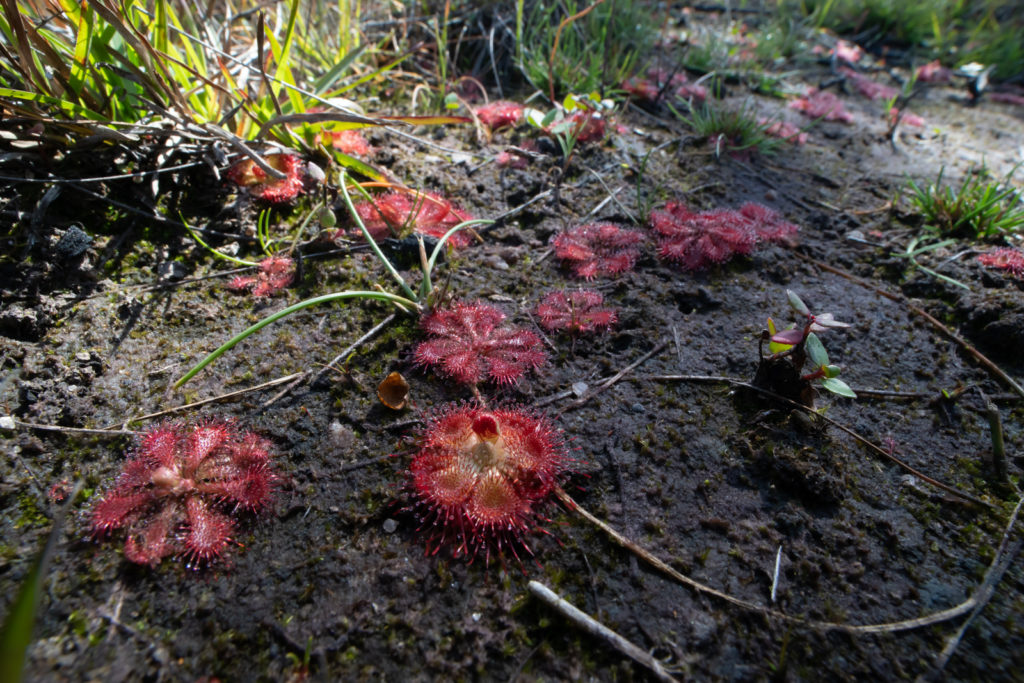
In semi-permanent rockier seepages, Utricularia dichotoma subsp. fontana was found in great abundance. This subspecies of U. dichotoma is identifiable by its thin and pointed corolla spur and is endemic to the rocky hills of the Great Dividing Range in Northern NSW and southern-central QLD. In Northern NSW, the subspecies typically blooms in early summer, but this year’s La Nina weather pattern resulted in an offseason flowering peak.
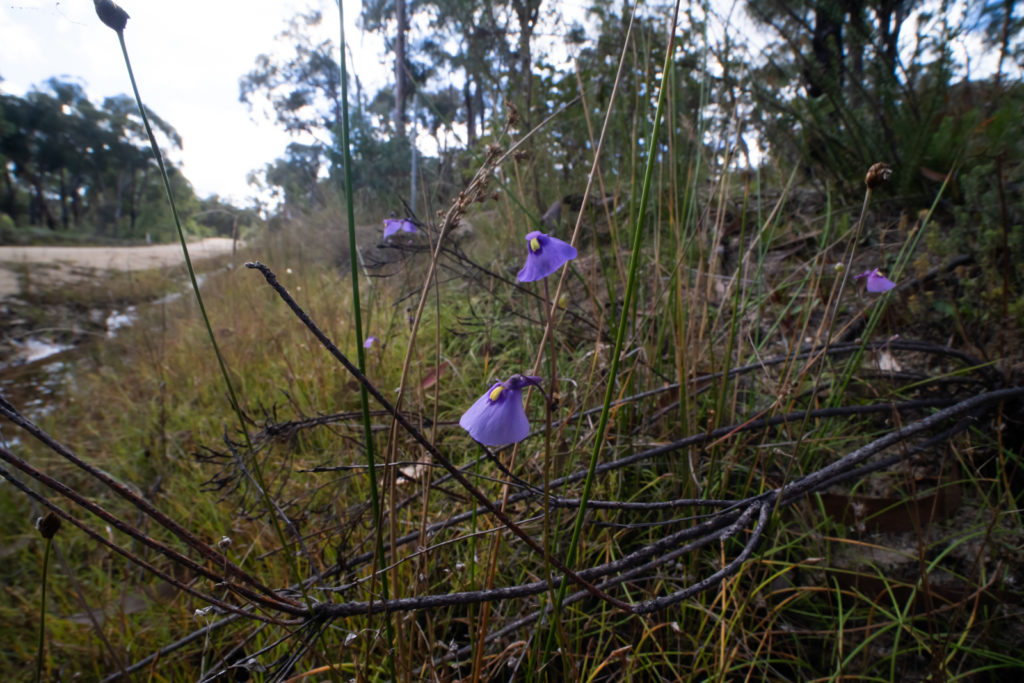
Utricularia dichotoma subsp. fontana
In larger seepages, water often accumulated in natural channels to form more permanent creeks with deeper water. Utricularia dichotoma subsp. aquilonia favoured this wetter environment. This widespread subspecies is found in upland creeks across the Great Dividing Range from central – northern NSW and can be identified by its tall scapes and larger, fuller lower corolla lip.
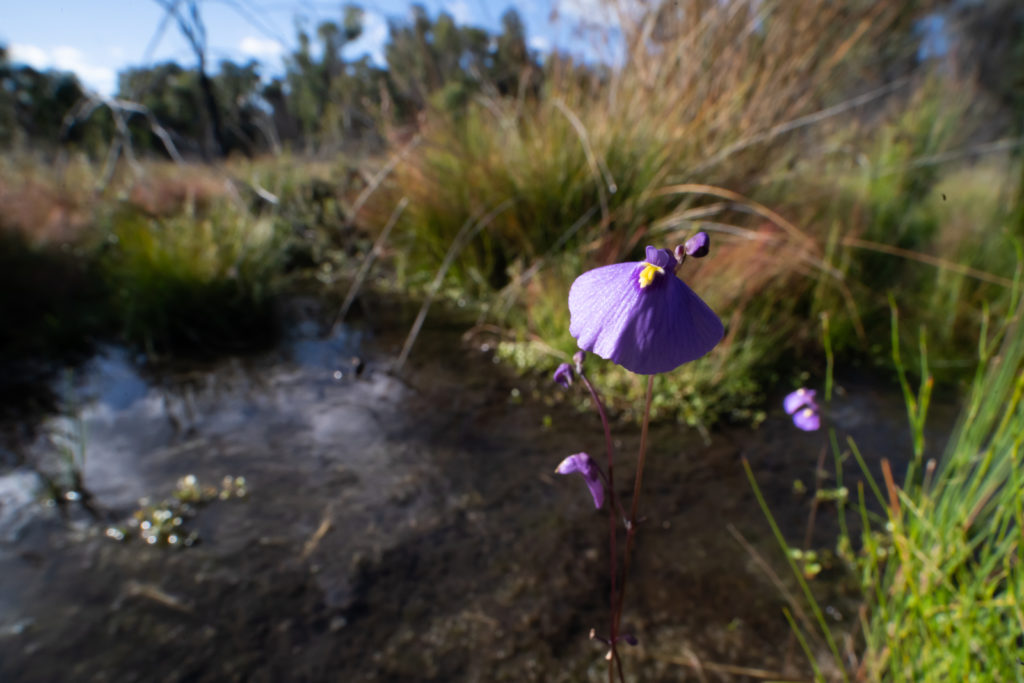
A surprising find was the east coast taxon of Utricularia aff. lasiocaulis. This is the first time the species has been recorded in the state! The plants grew on seepages on top of granite platforms and can be recognised by its large, upright upper corolla lip. The lower corolla lip of this form had edges that were reflexed upwards in most specimens.
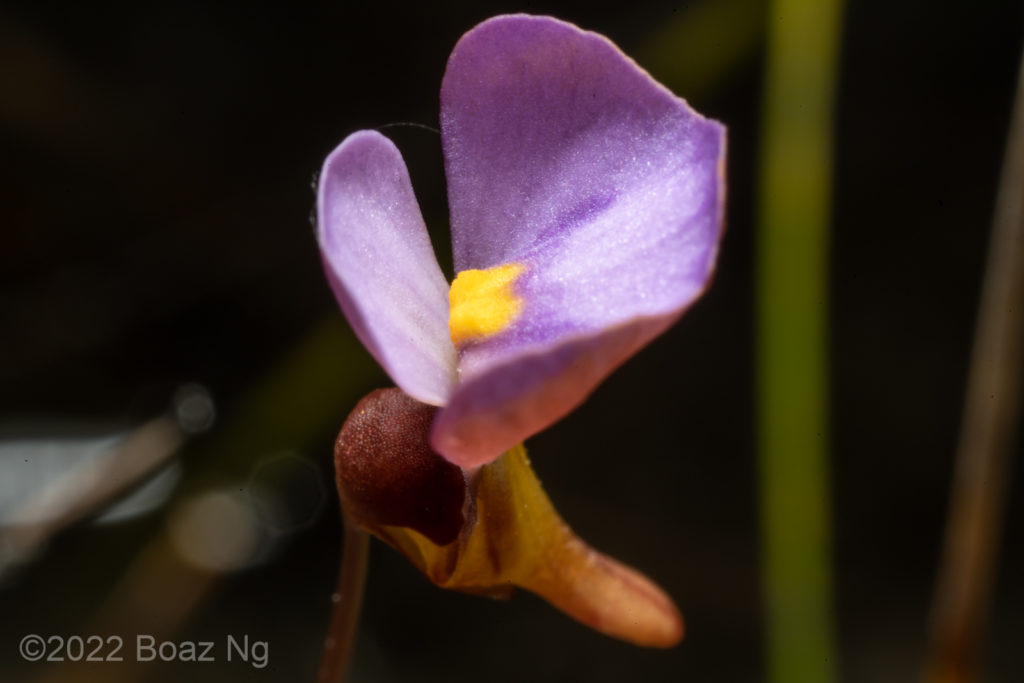
Tuberous Drosera in the peltata complex also grew in the area. Since this was the start of the growing season, most plants were still in rosette stage and could not be accurately identified. I managed to find some offseason plants in bud so was able to guess the species with reasonable confidence. In wetter areas, plants with red rosettes and foliage were found and keyed out to Drosera gracilis.
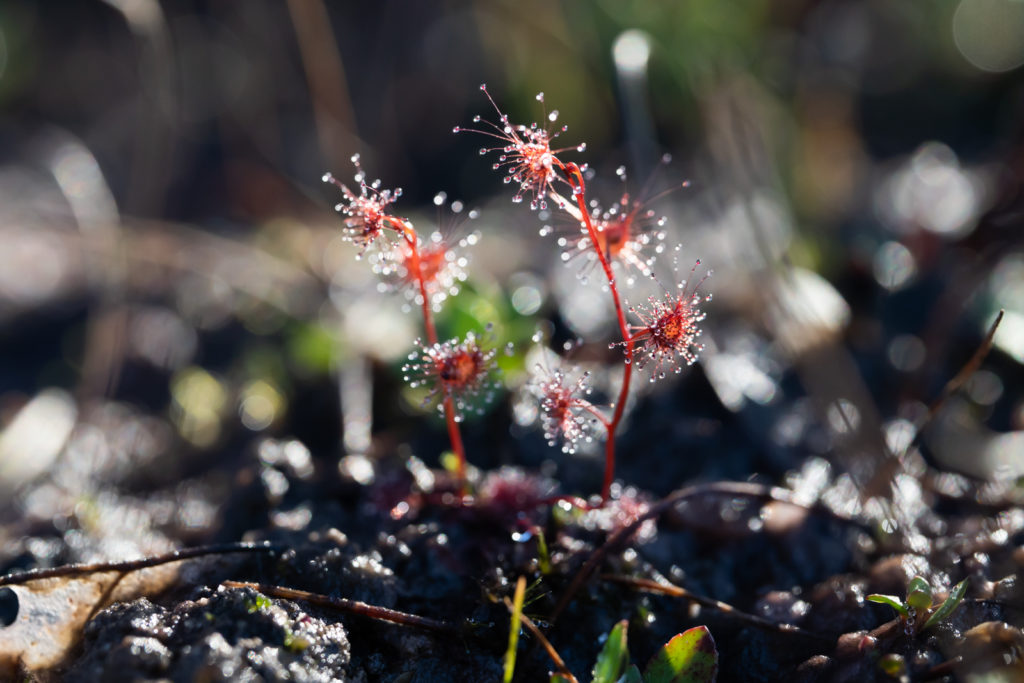
Growing in clay was another taxon with sparse but substantial green rosettes and foliage. The sepals of this taxon are densely covered with small glandular indumenta and the sepal margins are fimbriate. This is likely an undescribed species in the complex and I am hesitant to guess its affinities without close examination of the flowers and seed – looks like I’ll have to come back and explore the area again in spring!
